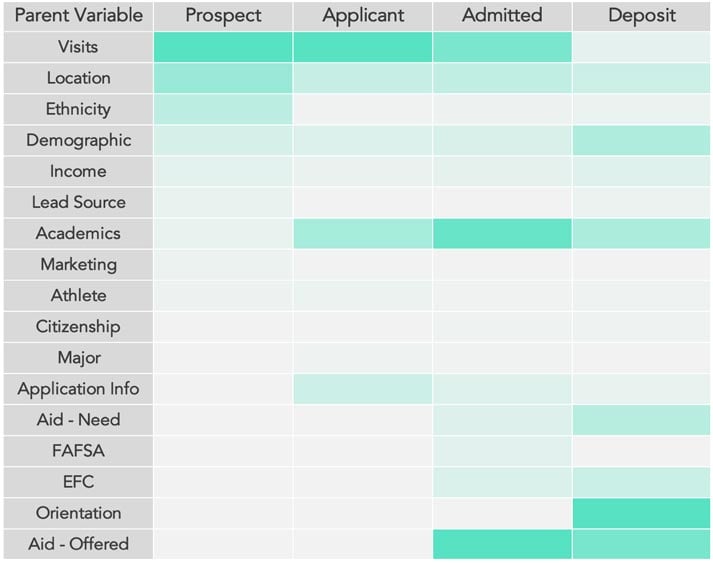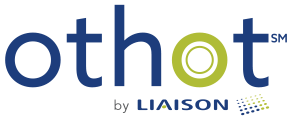If you’re already familiar with Othot, then you know that we’re an advanced analytics company that provides higher education institutions with enrollment and retention solutions. Through machine learning, we develop predictive models that identify key influencers around a student’s likelihood to enroll. This gets even more interesting when you consider which variables are most important at each stage in the enrollment lifecycle. As prospective students progress on their journeys towards enrollment, different attributes at each phase influence their decisions to enroll. By understanding the importance of these attributes at each phase, higher education institutions can make more informed decisions to best influence prospective students.
By aggregating (and anonymizing) our growing roster of predictive models across our customer base, we developed a Variable Importance Chart. While every variable has the opportunity to impact the model in each phase, some are more important than others. At a high level, the visualization shows you which general categories of variables have the most (and least) influence on the likelihood that students will enroll at each phase of the lifecycle. A cell that is more opaquely green indicates that the parent variable has a greater impact on a prospective student’s decision to enroll. It’s important to note that the weight of these variables was determined by a variety of highly advanced algorithms and not based on assumptions.
Variable Importance Chart

One key takeaway from this analysis is that a visit is the most dominant attribute that increases the likelihood of enrollment. Most colleges and universities have anecdotally assumed that visit programs help move the needle towards enrollment goals, and now that can be proven true with data science. More specifically, it becomes critical to understand what visit types have the most impact for each individual student and how visit types may be used in combination with one another to yield the optimal result.
But how do you get a student to visit? Understanding the attribute importance of previously enrolled students at your institution allows you to better target your marketing and outreach to early phase prospective students. It is valuable to know the demographic information, academic quality and other characteristics so you can best tailor your message to prospective students. It is also extremely valuable to know which students would be most impacted by a specific visit type.
Othot’s platform showed one higher education institution that incentivizing visits were a top indicator in yield. By changing behavior to incentivize students to visit, the institution saw a 30% increase in visit attendance in 2017, and has already achieved more visits year-to-date in 2018 than all of 2017. Another institution used Othot’s platform to examine the impact of key variables at the early lifecycle stages. By targeting those characteristics and the prospective students with higher likelihood scores, the institution enrolled an applicant pool with enough quantity and quality to achieve their enrollment targets in 2018.
As one would intuitively expect, financial aid plays a significant role in determining likelihood to enroll, but it’s impact is limited to later lifecycle stages. While it is important to appropriately offer and allocate your financial aid, if you don’t focus on key attributes at early funnel stages that impact likelihood to enroll, you may already have missed the opportunity to build the correct funnel to shape your class.
During this time of the year, customers are leveraging Othot’s Sensitivity Analysis to inform financial aid packages for key student populations and as an input into the appeals process in April. It is extremely valuable to know which students may be most impacted by financial aid and by what amount. Longer term, customers are looking at the deeper level of insights as a key input into informing next year’s financial aid award policies.
One customer used Othot’s sensitivity functionality to focus on the importance of financial aid at the admitted lifecycle phase. By looking at the impact of additional incremental scholarship awards, this institution is showing 20% growth on deposited students year-to-date for a key growth target market.
If you have any questions about variable importance or any of our examples, please contact us at othotteam@othot.com.
Dave Babst



